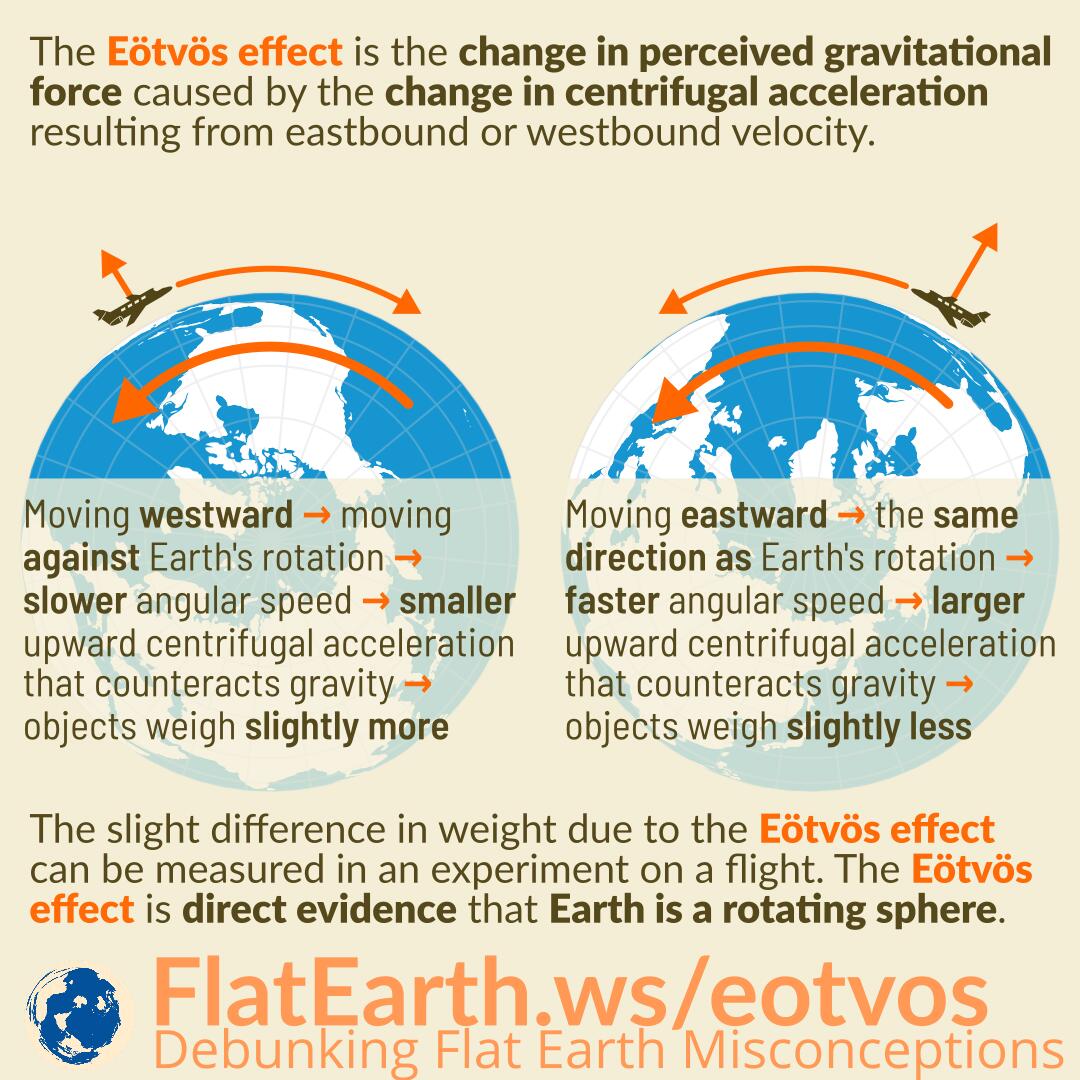Eötvös effect is the change in perceived gravitational acceleration when moving eastward vs. westward. An object will weigh slightly more when moving westward than when it is stationary or moving eastward.
The slight difference in weight due to the Eötvös effect can be measured in an experiment on a flight. The Eötvös effect is direct evidence that the Earth is a rotating sphere.
Loránd Eötvös discovered the effect in the 1900s after noticing the difference in gravity measurement on moving ships. He noticed that the readings were lower when the boat moved eastwards, higher when it moved westward. He identified this as primarily a consequence of the rotation of the Earth.
The rotation of the Earth causes an upward centrifugal acceleration away from the Earth’s axis of rotation. The magnitude of this acceleration is tiny. Along the equator, the centrifugal acceleration is about 0.03 m/s².
If an object is moving eastward, the object is moving in the same direction as the Earth’s rotation and results in a larger angular velocity. It results in a higher centrifugal acceleration away from Earth’s axis of rotation.
On the other hand, moving westward means moving against Earth’s rotation. The velocities cancel each other and result in smaller angular velocity. It results in a lower centrifugal acceleration.
Meanwhile, Earth’s gravitational acceleration stays constant in either case. The difference in centrifugal acceleration when moving eastward and westward results in a small but measurable difference in downward acceleration. An object will weigh slightly more when moving westward and slightly less when moving eastward.
Practical Example
Assuming we are flying above the equator. We’ll take a 1000 gram weight with us, and before taking off, we calibrate our scale, so it shows 1000 grams at sea level. If we are cruising at 925 km/hour at the altitude of 12500m, then our scale will measure 991 gram if the plane is flying eastward. On the other hand, it will weigh 999 grams when the aircraft is flying westward. There’s a difference of 8 grams due to the Eötvös effect.
Other than the Eötvös effect, the altitude of the aircraft gives us a smaller gravitational force due to the difference in the distance from Earth’s center of gravity.
The calculation here was done using the online calculator Centrifugal and Gravitational Acceleration in an Aircraft by Walter Bislin.
An Experiment
References
- Eötvös effect – Wikipedia
- Centrifugal and Gravitational Acceleration in an Aircraft – Walter Bislin


